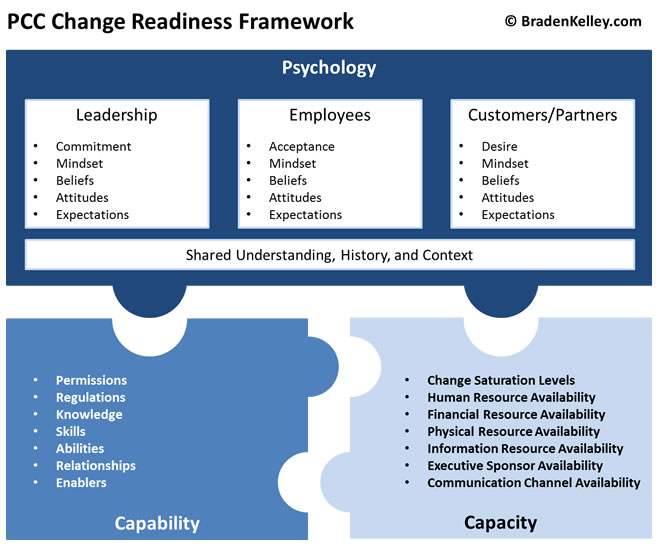 If your organization is struggling to sustain its innovation efforts, then I hope you will do the following things.
If your organization is struggling to sustain its innovation efforts, then I hope you will do the following things.
- Find the purpose and passion that everyone can rally around.
- Create the flexibility necessary to deal with the constant change that a focus on innovation requires for both customers and the organization.
- Make innovation the social activity it truly must be for you to become successful.
If your organization has lost the courage to move innovation to its center and has gotten stuck in a project – focused, reactive innovation approach, then now is your chance to regain the higher ground and to refocus, not on having an innovation success but on building an innovation capability. Are you up to the challenge?
There is a great article “ Passion versus Obsession ” by John Hagel that explores the differences between passion and obsession. This is an important distinction to understand in order to make sure you are hiring people to power your innovation efforts who are passionate and not obsessive. Here are a few key quotes from the article:
“The first significant difference between passion and obsession is the role free will plays in each disposition: passionate people fight their way willingly to the edge to find places where they can pursue their passions more freely, while obsessive people (at best) passively drift there or (at worst) are exiled there.”
“It’s not an accident that we speak of an “object of obsession,” but the “subject of passion.” That’s because obsession tends towards highly specific focal points or goals, whereas passion is oriented toward networked, diversified spaces.”
More quotes from the John Hagel article:
“The subjects of passion invite and even demand connections with others who share the passion.”
“Because passionate people are driven to create as a way to grow and achieve their potential, they are constantly seeking out others who share their passion in a quest for collaboration, friction and inspiration . . . . The key difference between passion and obsession is fundamentally social: passion helps build relationships and obsession inhibits them.”
“It has been a long journey and it is far from over, but it has taught me that obsession confines while passion liberates.”
These quotes from John Hagel’s article are important because they reinforce the notion that innovation is a social activity. While many people give Thomas Edison, Alexander Graham Bell, and the modern-day equivalent, Dean Kamen, credit for being lone inventors, the fact is that the lone inventor myth is just that — a myth, one which caused me to create The Nine Innovation Roles.
The fact is that all of these gentlemen had labs full of people who shared their passion for creative pursuits. Innovation requires collaboration, either publicly or privately, and is realized as an outcome of three social activities.
1. Social Inputs
From the very beginning when an organization is seeking to identify key insights to base an innovation strategy or project on, organizations often use ethnographic research, focus groups, or other very social methods to get at the insights. Great innovators also make connections to other industries and other disciplines to help create the great in sights that inspire great solutions.
2. Social Evolution
We usually have innovation teams in organizations, not sole inventors, and so the activity of transforming the seeds of useful invention into a solution valued above every existing alternative is very social. It takes a village of passionate villagers to transform an idea into an innovation in the marketplace. Great innovators make connections inside the organization to the people who can ask the right questions, uncover the most important weaknesses, help solve the most difficult challenges, and help break down internal barriers within the organization — all in support of creating a better solution.
3. Social Execution
The same customer group that you may have spent time with, seeking to understand, now requires education to show them that they really need the solution that all of their actions and behaviors indicated they needed at the beginning of the process. This social execution includes social outputs like trials, beta programs, trade show booths, and more. Great innovators have the patience to allow a new market space to mature, and they know how to grow the demand while also identifying the key shortcomings with customers who are holding the solution back from mass acceptance.
Conclusion
When it comes to insights, these three activities are not completely discrete. Insights do not expose themselves only in the social inputs phase, but can also expose themselves in other phases — if you’re paying attention.
Flickr famously started out as a company producing a video game in the social inputs phase, but was astute enough during the social execution phase to recognize that the most used feature was one that allowed people to share photos. Recognizing that there was an unmet market need amongst customers for easy sharing of photos, Flickr reoriented its market solution from video game to photo sharing site and reaped millions of dollars in the process when they ultimately sold their site to Yahoo!.
Ultimately, action is more important than intent, and so as an innovator you must always be listening and watching to see what people do and not just what they say. Build your solution on the wrong insight and nobody will be beating a path to your door.
NOTE: This article is an adaptation of some of the great content in my five-star book Stoking Your Innovation Bonfire (available in many local libraries and fine booksellers everywhere).
![]() Sign up here to get Human-Centered Change & Innovation Weekly delivered to your inbox every week.
Sign up here to get Human-Centered Change & Innovation Weekly delivered to your inbox every week.

 If your organization is seeking to create a continuous change capability, it must have a strong focus on increasing its
If your organization is seeking to create a continuous change capability, it must have a strong focus on increasing its 

 Are you and your organization ready for change?
Are you and your organization ready for change?

